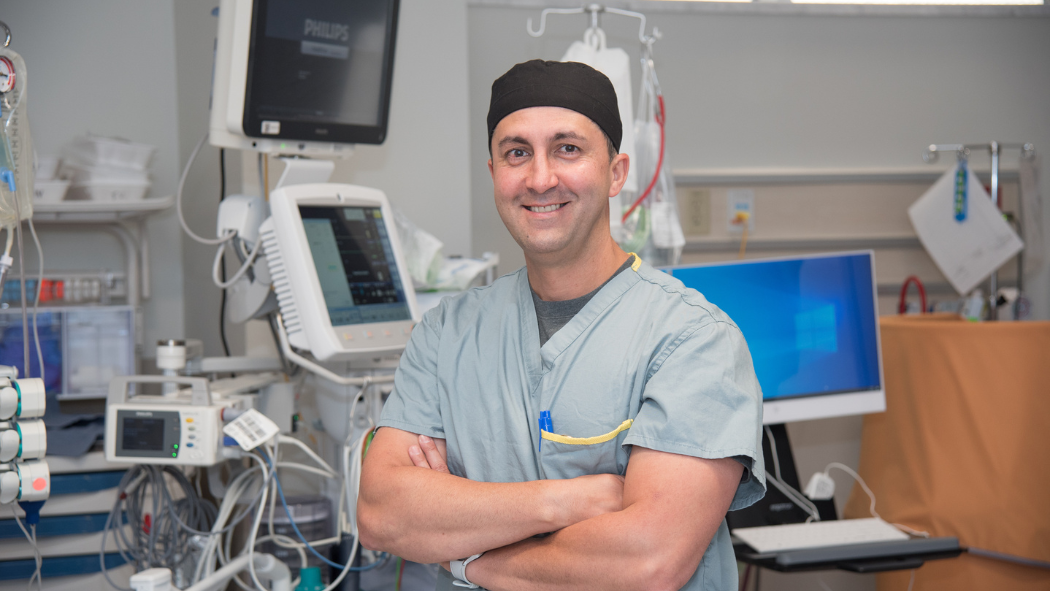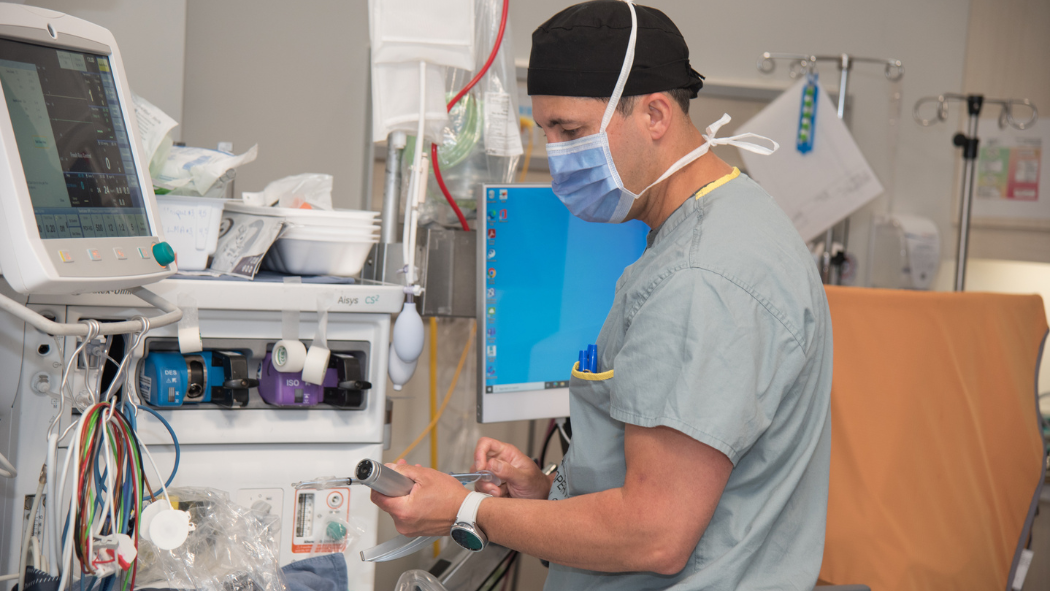
October 9, 2024
By Shakib Naqshbandi, Anaesthesia Assistant, Anaesthesia Assistant Team at University Hospital
Anaesthesia assistants at LHSC
Certified Clinical Anesthesia Assistants (CCAA) perform a variety of patient care tasks aimed at improving efficiency within the operating room (OR), reducing turnaround time between surgeries and improving patient safety. By assisting the anaesthesiologist with their daily tasks, we improve their balance of work between surgeries and the balance of work of the anaesthesia team. Our daily tasks can better be explained by separating them into three categories: pre-operative, intraoperative and post-operative.
Patient care
The CCAA works alongside the anaesthesiologist in both chronic and acute patient care settings.
The CCAA is a member of the operating room anaesthesia emergency response team, responding to airway and other patient care related emergencies and they are an integral part of Code START (Stroke Anaesthesia Response Team) – which responds to all Code Stroke emergencies.
Before the operation (pre-operative), some of the responsibilities of the CCAA include:
- Checking functionality of all anaesthetic equipment;
- Reviewing the patient’s chart and creating an appropriate anaesthetic plan;
- Performing an airway assessment;
- Preparing medications for the procedure;
- Setting up airway equipment and other monitors relevant to the case.
During the operation (intraoperative), some of the responsibilities of the CCAA include:
- Placing all standard monitors on the patient in alignment with Canadian Anesthesiologists’ Society standards;
- Performing initial treatment along with the anaesthesiologist. This can include intubation, arterial line insertion, IV insertion, central line placement and other procedures needed for the safety of the patient.
- Recording vitals, completing the anaesthetic record and monitoring the patient to ensure they are safe, pain-free and ready for the surgery.
- Ensuring the patient’s vitals are within the desired range and, if not, administering the appropriate medication to achieve the desired range. This stage is accomplished independently or alongside other OR staff.
- Emerging the patient from anaesthetic near the end of surgery by weaning medications and ventilation and administering post-operative medications that aim to help alleviate pain, nausea and vomiting.
After surgery (post-operative), the CCAA transports the patient to the recovery unit and gives a report to the receiving nurse. After ensuring the patient is stable and they are recovering as planned, the CCAA returns to the OR and sets up for the next surgery.

Education
I was initially interested in studying law, so I studied and received my honours degree in psychology at Western University. As I was studying, a family member became quite sick with asthma, so I then decided to go into respiratory therapy so I could support patients like my family member.
After my studies at Western, I went to Fanshawe College to become a Registered Respiratory Therapist (RRT).
After working as an RRT for about seven years, I wanted to make a change to become an anaesthesia assistant, so I went back to Fanshawe in 2012 for my CCAA certification.
I made the career change because I had always loved working in the operating room and thought that becoming an anaesthesia assistant would be an optimal choice. I also wanted to challenge myself in a new way and knew that this position would be both challenging and rewarding.
I am also, currently, a part-time professor of the CCAA Program at Fanshawe College, supporting the next generations of CCAAs and preparing them for the important work they will be embarking on.
Being an anaesthesia assistant at LHSC
I started working at LHSC in 2005 – first as an RRT, and now as a CCAA.
The CCAA role evolved from the Operating Room RRT (OR RRT) role in order to help the anaesthesiologist. That means we are fully functioning RRTs with advanced training to perform more skilled patient care tasks.
When I first started working as a CCAA, our role was more limited in scope than it is now. In the past, we worked alongside a staff anaesthesiologist, but now we function more independently in a lot of areas. However, it’s important to note that a staff anaesthesiologist is always readily available if they are needed.
With the additional responsibilities and independence, I really enjoy the fact that our role is one of, if not, the most advanced and independent roles for a CCAA in the country.
Positive impact
I love being a part of complex surgical procedures and knowing that I am helping to improve patient lives. I also enjoy being a part of the dynamic team and the comradery within the department.
CCAAs greatly impact and improve patient care services and experience, patients' quality of life, anaesthesiologists’ balance of work, operating room turnaround times, and we help to decrease waiting time for patients requiring procedures involving anaesthesia.
Demand for CCAAs is constantly growing. We play an important role in the operating rooms and I’m happy I made this career move. I find that the CCAA role at University Hospital is both challenging and rewarding.
Are you interested in growing your career at LHSC? Check out current opportunities online or connect with the Recruitment Team recruitment@lhsc.on.ca to learn more.
